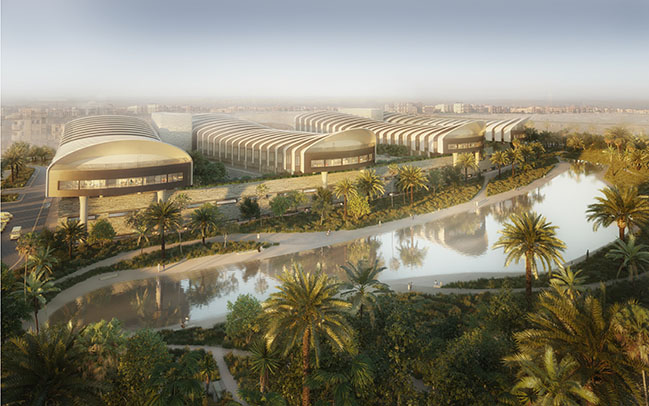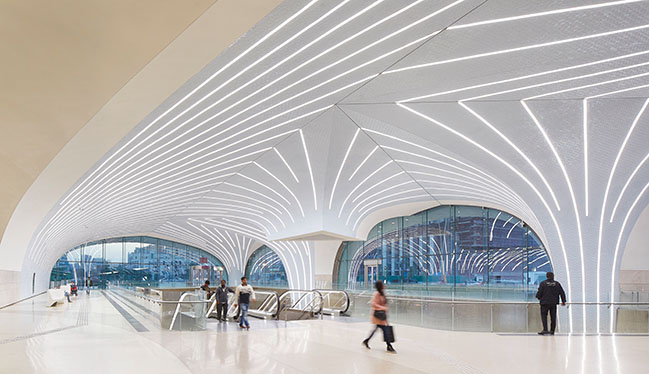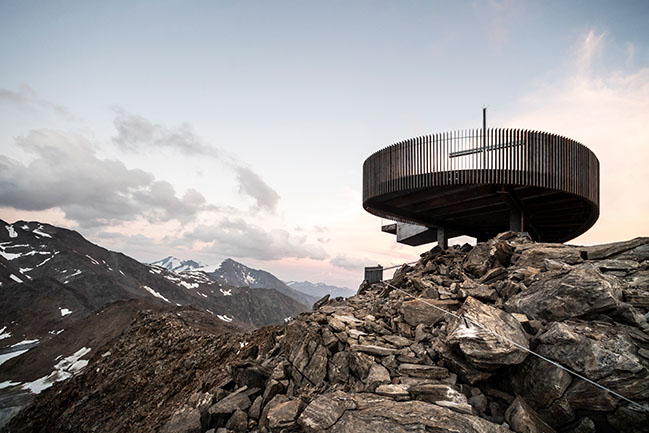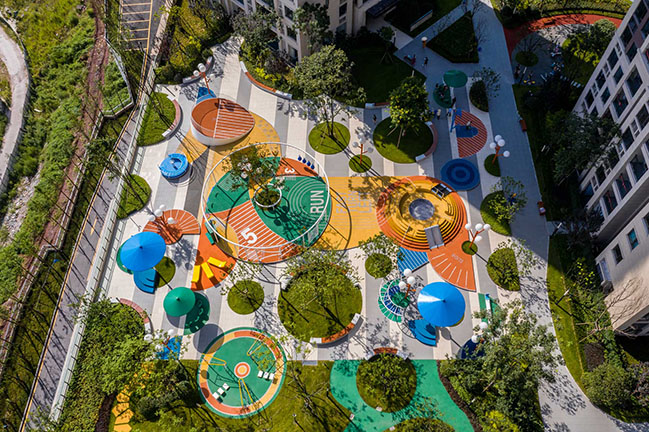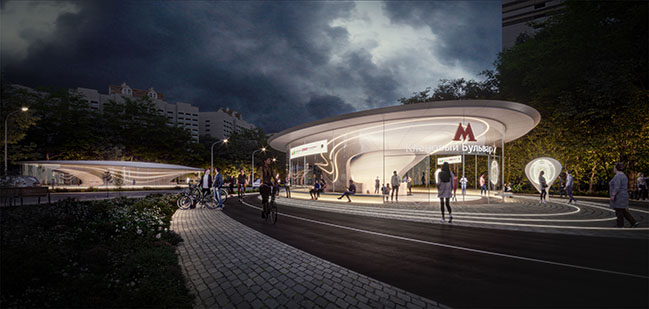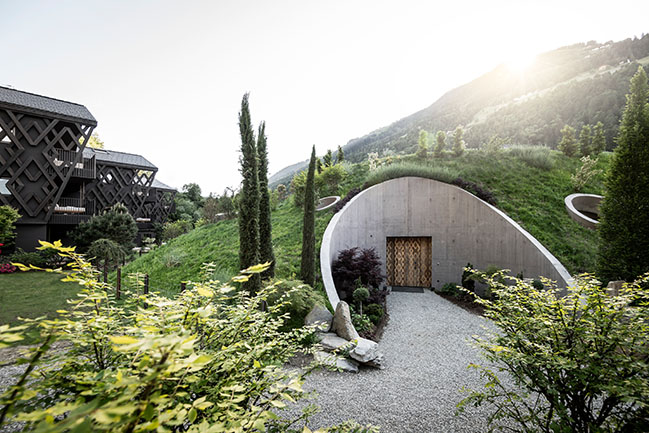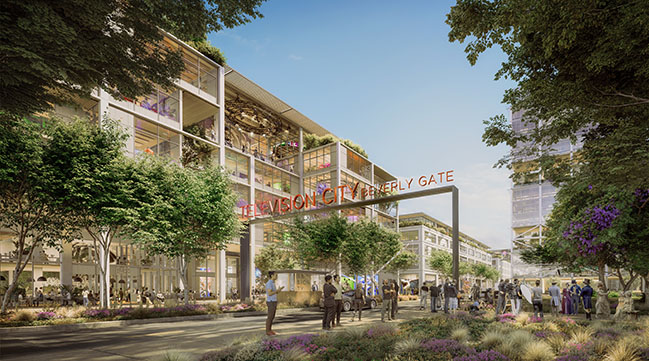09 / 14
2020
Emergency Hospital 19: a new concept for the future of healthcare born out of the collaboration between Humanitas and Techint under the guidance of Architect Filippo Taidelli...
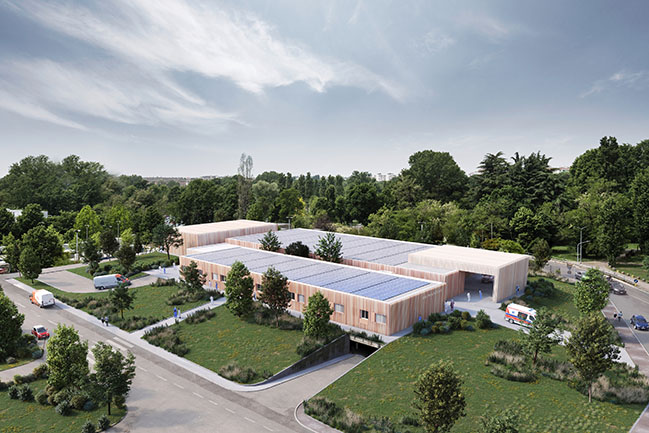
Architect: Filippo Taidelli Architetto
Client: Immobiliare Pieve S.r.l.
Location: Rozzano (MI), Italy
Total surface: 2750 sq.m.
Partners: Techint, E-plant, Tecnologie Applicate, SOL, TELCOM, Impresa Pirovano, Locabox, Operamed, Gerflor, Greenwood, Isea, Sikkens, Philips, Malvestio, Linet, Drager, BD, Performance in Lighting, iGuzzini, DGA
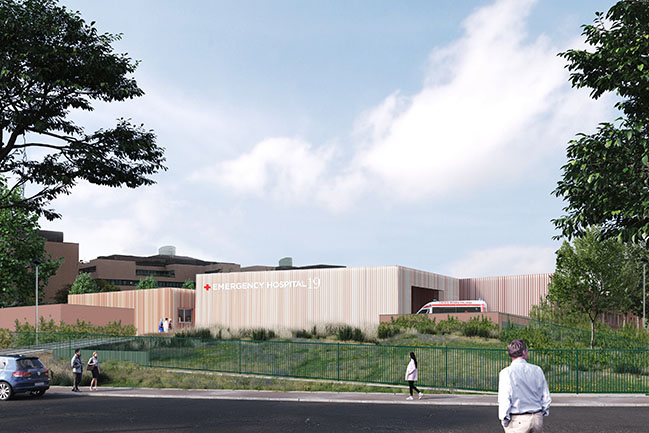
From the architect: A modular, autonomous, flexible and sustainable hospital project. Emergency Hospital 19 is a structure designed around the patient to support the work of hospitals in the temporary or permanent management of infectious disease emergencies.

A self-sufficient, independent healthcare facility that meets the needs of emergency architecture, but at the same time can become a permanent building. Emergency Hospital 19 is a project developed by Humanitas, with the engineering and design support of Techint and architect Filippo Taidelli for the management and containment of infectious diseases within hospital facilities. A project in which architecture, medicine and engineering contribute to defining spaces for management and care: efficient, sustainable and with a human face.
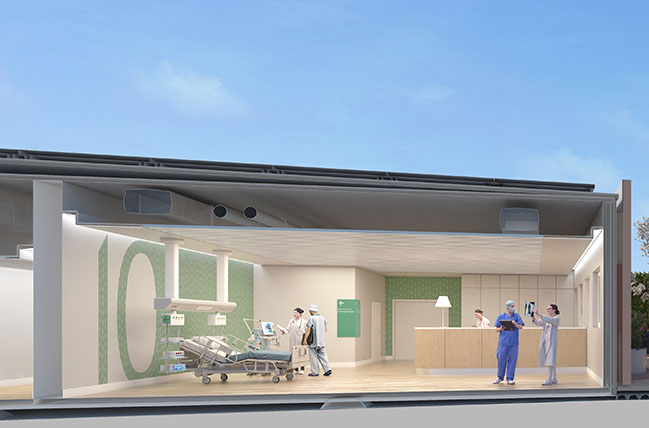
Not just a concept, but a pilot project and a new model for managing healthcare emergencies with the aim of providing quality, safety and efficiency spaces.
The emergency of the last few months has highlighted the need to be always ready to combat viruses, both known and unknown. By separating patient pathways, the facility will guarantee continuity of care and assistance to patients with other pathologies, in total safety.
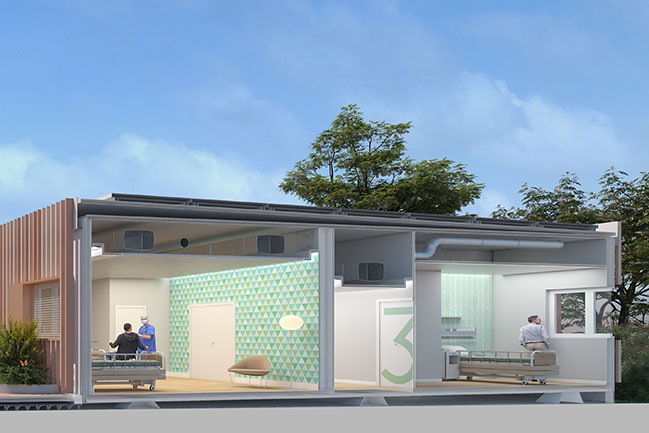
Emergency Hospital 19 is Humanitas's response to the need to be ready to manage the critical aspects of an emergency and normal healthcare at the same time: versatile, universally adaptable architecture - achievable in just 3 months - that starting from a modular structure can grow without constraints, be adapted to and integrated with the preexisting context and have its spaces customised.
The construction of Emergency Hospital 19 next to the current Emergency Room in just eleven weeks was made possible by the generous contribution of Intesa Sanpaolo to the Istituto Clinico Humanitas and by TenarisDalmine and Fondazione Rocca to the Humanitas Foundation for Research, responsible for the scientific development of the project.
Emergency Hospital 19 is the first of three facilities dedicated to emergency carecurrently being built in the North of Italy: Bergamo and Castellanza.
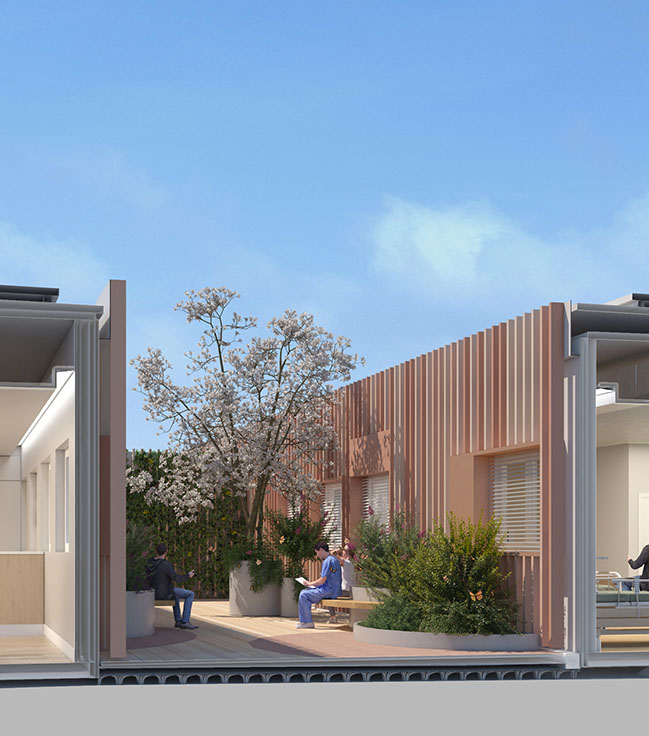
The scenario
The Covid-19 emergency has laid bare the need to rethink the structural design of hospitals, starting with the separation of patient pathways.
Humanitas has worked with Techint and architect Filippo Taidelli on the formulation of a structural concept that represents a versatile, effective solution, able to support, temporarily or permanently, the activities of hospitals. A solution capable of responding in a modular and flexible way, quantity- and qualitywise, to a variable number of patients and different types of intended use (intensive care/patient care) depending on the healthcare emergency scenario.
The humanised hospital and therapy as beauty
Filippo Taidelli has pursued the development of a pivotal theme of the path undertaken in recent years by Humanitas in the humanisation of spaces: the project for Emergency Hospital 19 is based on the need to put man, a patient in today's hospital, at the centre. The humanisation of the health care environment becomes the means whereby the patient is helped to regain possession of the healing process. The architecture enhances emotional, intellectual and sensorial factors, inserting elements such as family affections, nature and metropolitan stimuli.
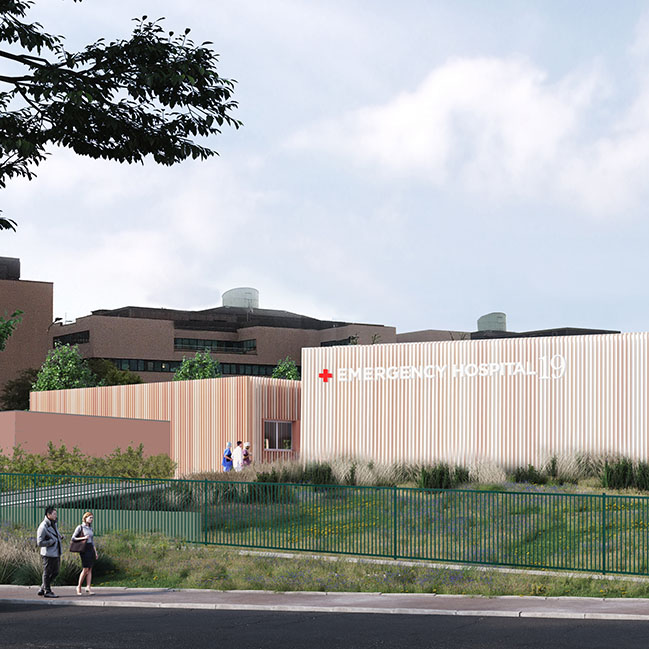
The environment must become a resource for supporting the healing process: many factors related to the architectural dimension of the environment can have a positive influence on the healing process.
Wards and intensive therapy units have large windows that allow the patient to benefit from natural light and a view of the landscape. The rooms are defended against the risk of glaring sun or overheating by the presence of Venetian blinds and silkscreens beyond the window.
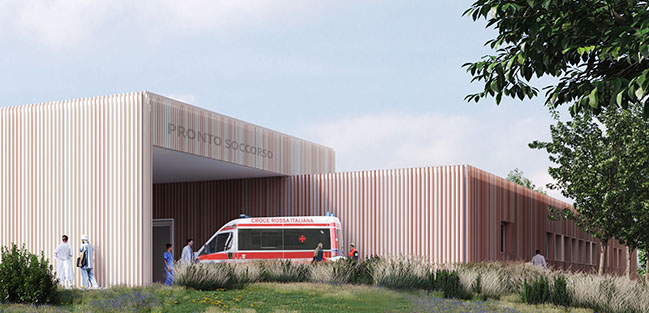
In an emergency situation, the patient can often spend more than 10 days in a hospital ward, in small spaces that sometimes do not allow the presence of other furniture except a bed - which becomes a couch, dining room and sofa. In this habitat, the finish of the inner enclosure helps to infuse serenity and tranquillity into the patient.
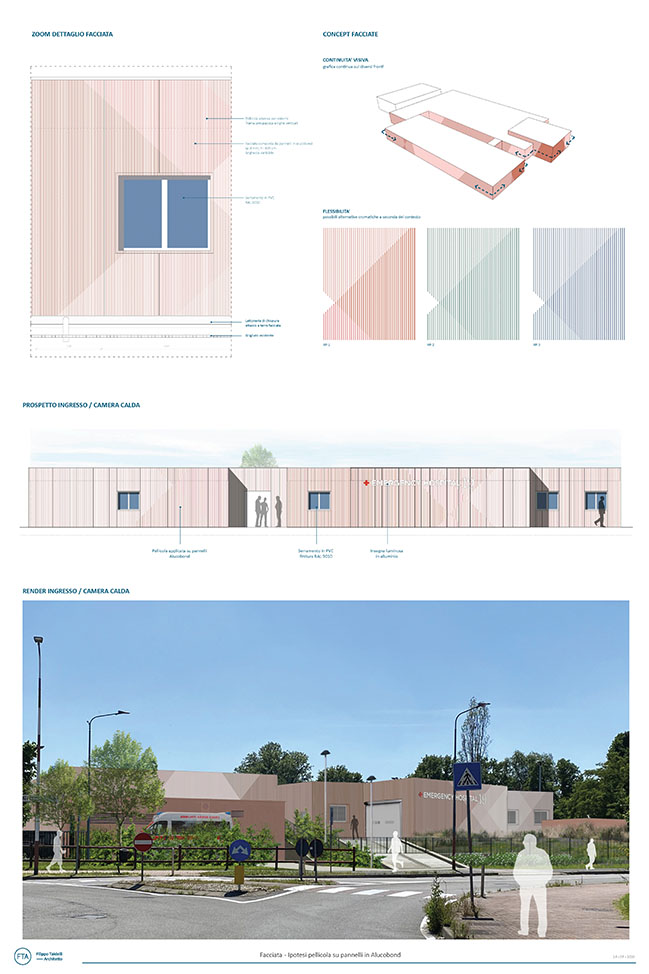
In the Emergency Hospital 19 project the multicoloured pastel striped wallpaper in rooms and corridors breaks up the monotony and continuity between spaces, as if projecting the patient into a carefree open-air atmosphere and helping him to feel less lost or oppressed. The floors, which simulate a seamless wooden deck, and the warm light fixtures (3000 k) also help to create a more enveloping atmosphere. These devices are designed to recreate domestic sensations of serenity and well-being, supporting the patient's delicate psychophysical balance.
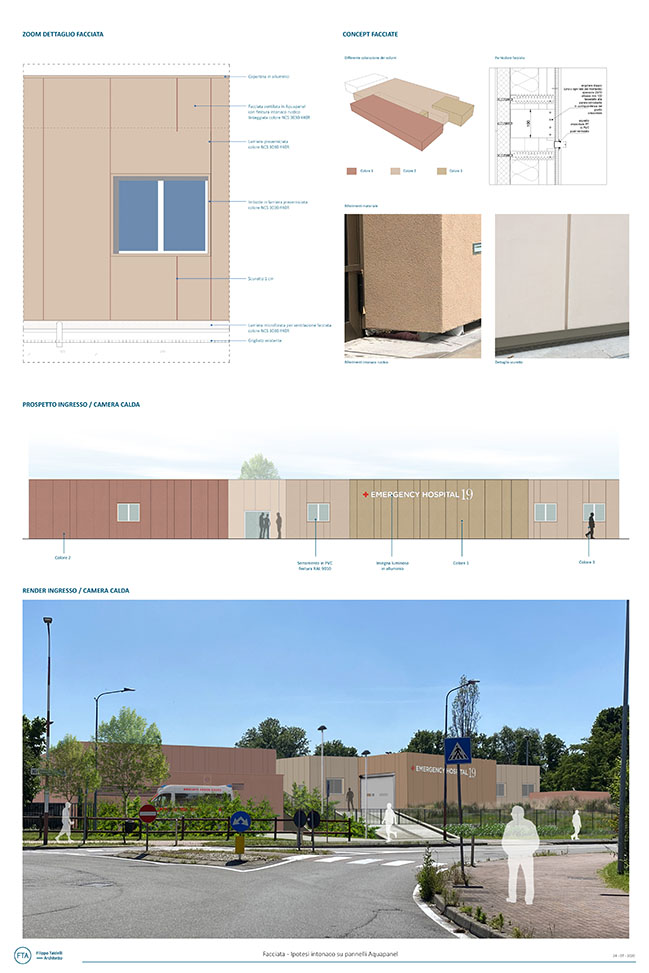
The relationship with nature and greenery becomes an essential component of architectural design, representing not only an element mitigating the climate of the enclosure, but also a therapeutic tool. Outdoor spaces thus become an opportunity to incentivise the symbolic value of greenery.
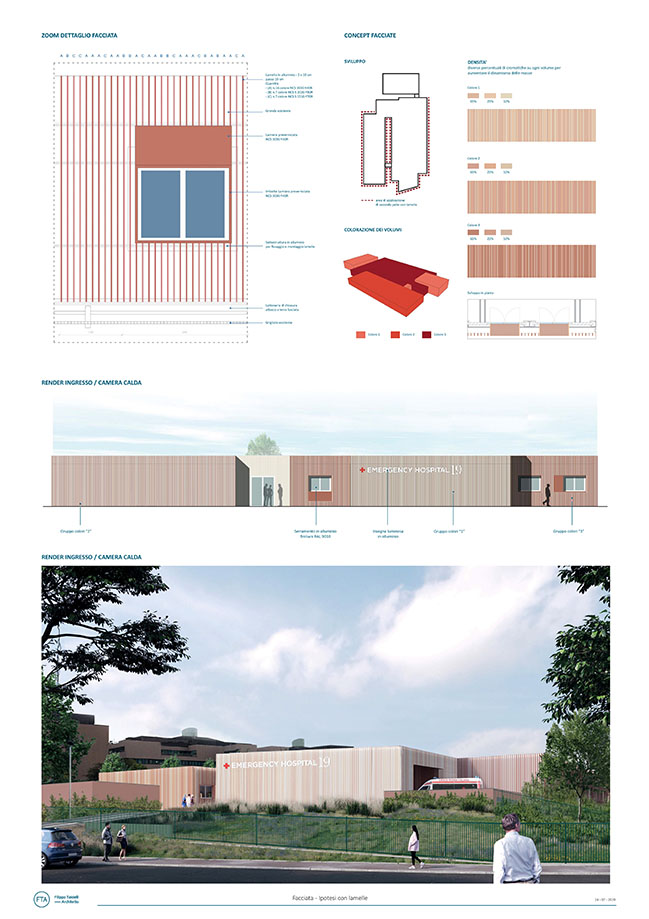
The sustainable hospital
Emergency Hospital 19 responds to an extended sustainability principle: technical, social, energetic and environmental. The basic module has been developed to be energetically autonomous, as well as adaptable to latitude and context.
The building enclosure has been designed to reduce incoming thermal energy by up to 50%, thus reducing the energy required by the interior air conditioning.
The more or less breathable double skin allows the building to adapt to different climatic conditions by making the most of the resources available on site (sun, wind, vegetation, etc. ...) to contain energy losses in winter and control overheating in summer.
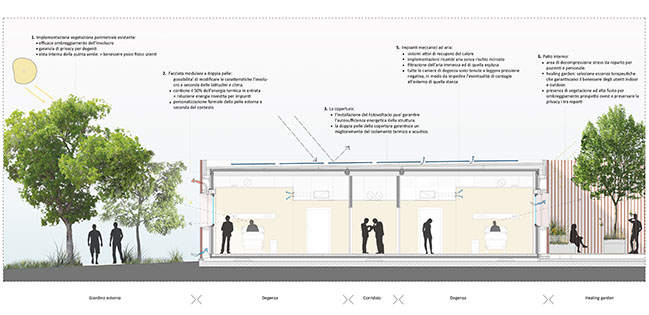
Therapeutic green
Green areas are an essential part of the project: they contribute to mitigating the climate of the enclosure, become an integral part of flow management - in a context where social distancing is a preventive measure - and a therapeutic instrument for patients and healthcare workers.
A visual backdrop for patients, the greenery contributes to the healing process and changes in vegetation mark the passage of time.
The patio area is the centre around which the operating and inpatient facilities are developed: an area, conceived as a small cloister of a Renaissance monastery, with single seats at safe distances offering patients semi-secluded green areas. An oasis of relaxation in a protected environment, surrounded by nature and its aromas, for a short break in the open air, where even the medical staff can temporarily get away from the atmosphere of the hospital ward and relieve their stress.
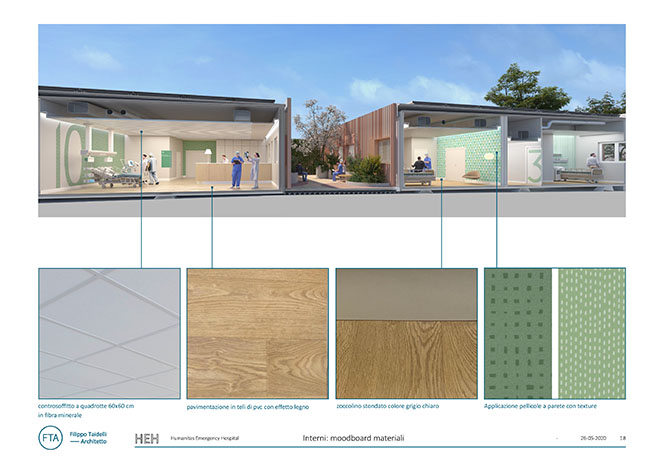
Even inside the hospital, bedridden patients can benefit from the relaxing effect of the vegetation thanks to the presence of plants, shrubs, flowering and aromatic species at the windows. Accommodated in coloured flower boxes of different sizes and heights, they make the garden lively even in winter, when there are fewer blooms.
The beauty of the patio can also be seen or glimpsed from inside the hospital. Plants, shrubs, flowering and aromatic species are positioned in correspondence with the windows and housed in coloured flower boxes of different sizes and heights, able to guarantee liveliness to the garden even in winter, when there are fewer blooms.
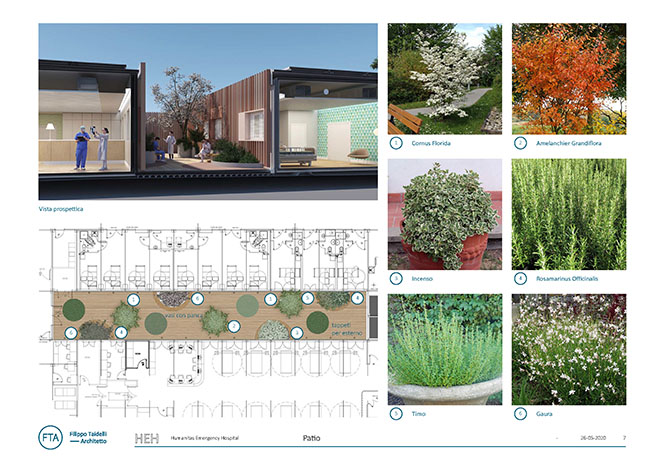
The spontaneous greenery offers an immersive sensory experience without ever disregarding the area’s utmost flexibility, and its maintenance and sanitisation. A therapeutic patio made up of multiple varieties of aromatic plants whose odours, released by volatile molecules involve the sphere of the emotions, memory, sensitivity and all related cognitive areas; colourful flowering perennials and plants that attract butterflies, bringing benefits from the wonderful blooms that alternate over the course of the seasons, restoring mental and emotional harmony through colours; small trees and winter flowering shrubs, to make up for the lack of summer flowering perennials and ensure the presence of greenery even in the cold months.
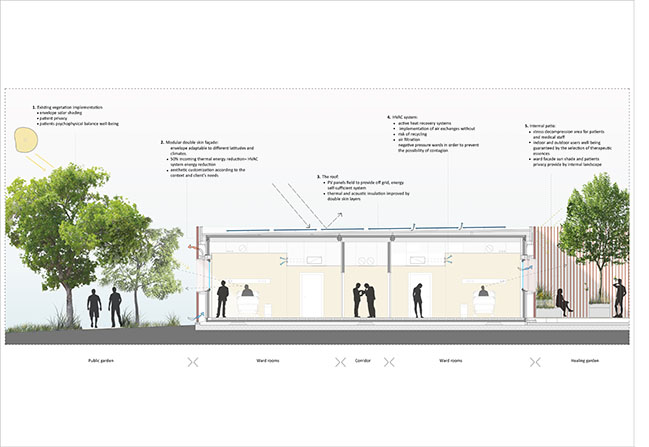
Facade cladding and architectural integration
In temporary and emergency situations, the main purpose of the façade cladding and architectural integration is to combine the necessary modularity of the openings and the repetitiveness of the interior layout with a composition capable of re-establishing a harmonious and flexible relationship with the new urban and landscape context, bringing the hospital conceptually and aesthetically closer to the civic centre.
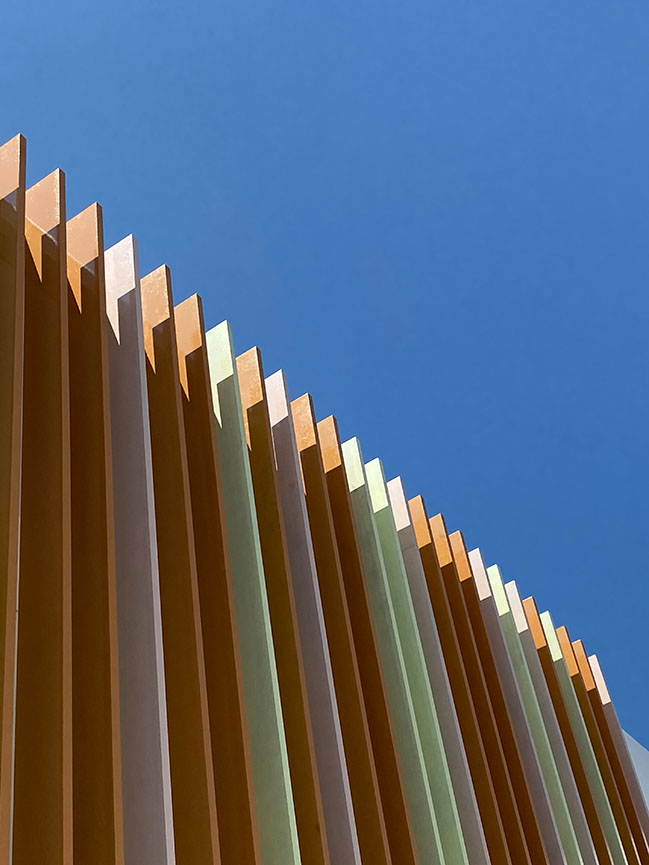
This is why the external facade of Emergency Hospital 19 has a second modular skin, conceived as a "dress" adaptable to the climatic and image conditions required by the particular geographical context. The façade also acts as a climate mitigator of the enclosure, to contain solar radiation, increase user comfort and reduce the energy required for the operation of air conditioning systems.
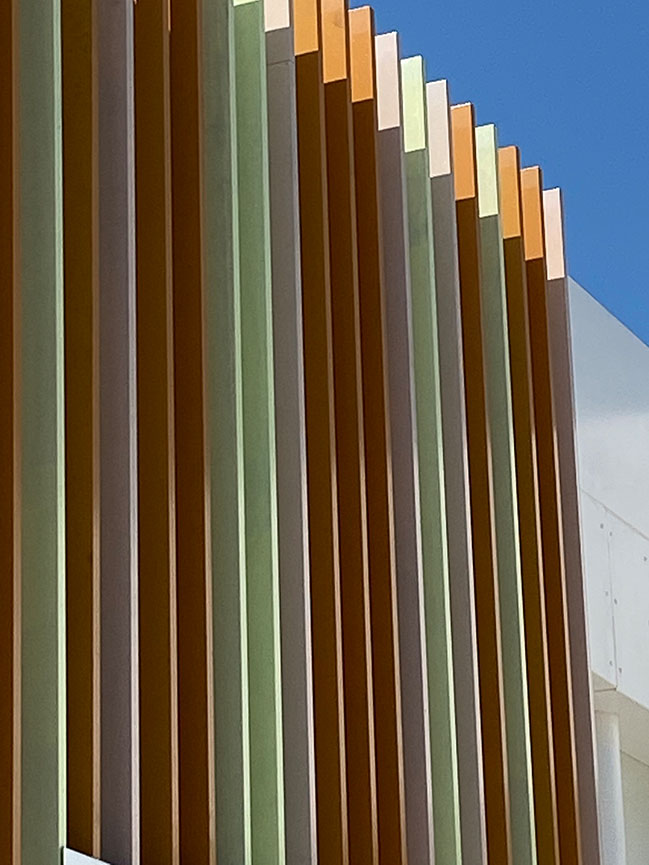
The second skin that covers the basic module is adaptable to different formal requirements and consists of two main elements: skin and edges.
The skin is a sequence of vertical slats in coloured aluminium which, with the changing point of view, modify the perception of the elevation, creating kinetic effects like those of Rafael Soto’s dynamic installations. Slat colours can be combined in a variety of percentages on the different facades: colours in the same shades but with variable intensity make the visual impact on the volumes dynamic and changeable.

In their different formal interpretations the windows are framed by coloured metal soffits that redesign the geometries in large façade-animating parterres. Like large lashes, these deep frames protect the glass surface from direct sunlight without limiting transparency, the view on to the surrounding landscape or the patient’s privacy.
Emergency Hospital 19
Emergency Hospital 19 is a versatile, universally adaptable architecture of high technical-formal and scientific content, designed to respond quickly to both temporary emergency situations and permanent extensions. The project takes in all key features for the hospital of the future, in a limited space that can be developed quickly. The Emergency Hospital 19 was built in just three months, a third of the time compared to a traditional structure, thanks to the mono-blocs that also allow for rapid disassembly and transport without the limitations of container distribution.
> YOU MAY ALSO LIKE: Humanitas University Student House by Filippo Taidelli Architetto
Emergency Hospital 19 by Filippo Taidelli Architetto
09 / 14 / 2020 Emergency Hospital 19: a new concept for the future of healthcare born out of the collaboration between Humanitas and Techint under the guidance of Architect Filippo Taidelli
You might also like:
Recommended post: Foster + Partners revealed designs for a modernized Television City
